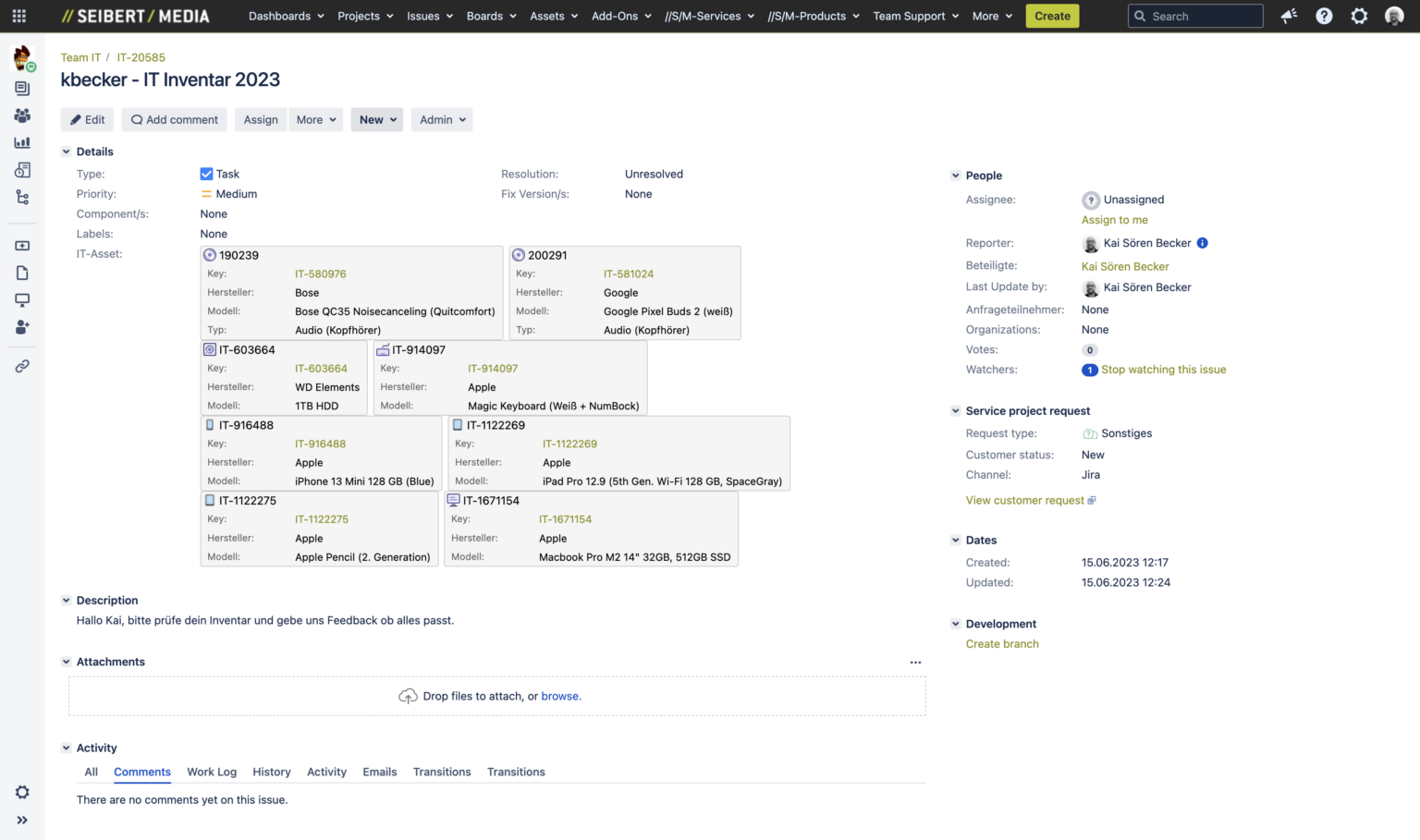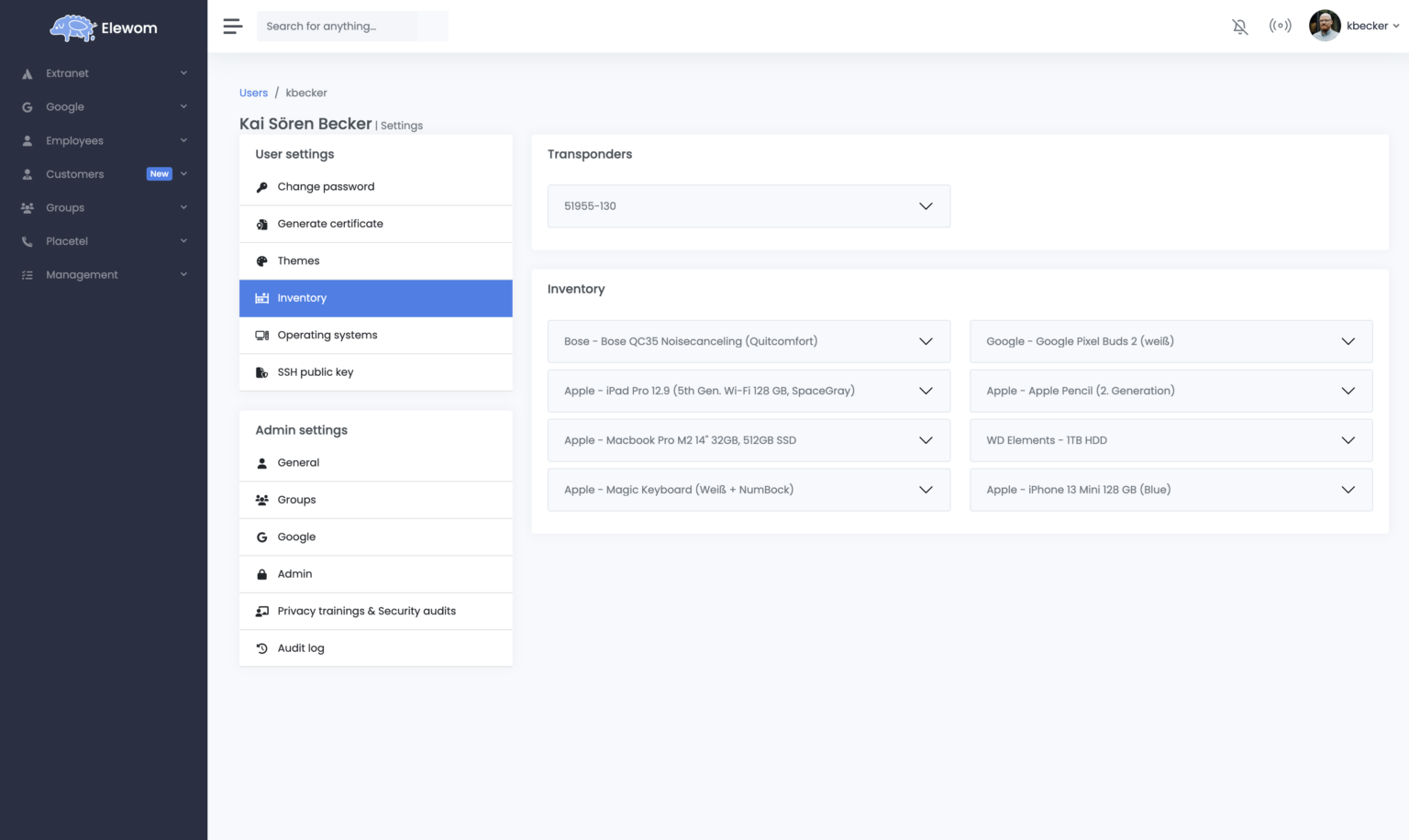Picture this: It's your first day at work in your new company. Colleagues from the HR department greet you, someone puts your first (good!) coffee on the table and shows you the strategically important office spaces, you get to know all the members of your new team - and then comes the big moment: You can soak it all in and take a look at your future work spot.
Your reaction may now range from "Wow!" to "Oh my..." depending on where you've been hired. And I'm sure you know people in your circle of friends whose first day at work was waiting for the IT department to install a decent piece of work equipment (PC, laptop, phone, etc.) at their workplace. But of course, there is also the other story: immediately, you have access to a height-adjustable desk with your choice of two monitors, an additional keyboard and mouse, headphones, and the list goes on and on…
The probability for the latter scenario increases if the internal IT is timely informed of when you start - and can plan accordingly.
And once you've been with the company for a while, you may also need new equipment. Here, too, internal IT is usually your first point of contact. Today, we'll show you what services the internal IT department at Seibert Media offers, what goes on behind the scenes, and how you can optimize your processes in this regard.
"Hello IT, I need ..." - a request from a happy customer to the service desk
Whenever someone at Seibert Media has a problem, for example, a hardware issue, or needs to assign a new password, or needs headphones, they open a ticket for the internal IT. All requests converge to one central point - the service desk.
These can be, but do not have to be, purchase orders (hardware, software, equipment, etc.). All requests are filtered into queues by:
- Certain categories: On-/Offboarding (employees are hired or leave the company), notebooks (XY needs a new notebook), cell phones, and events (if e.g. screens, beamers, sound system, etc. are needed).
- Service Desk Agents: Every team member of the internal IT team can assign requests and "park" them in their queue
- Service levels: Is the request for first or second-level support?
There are also automated rules for assigning keywords to classify requests more precisely. For example, issues can be automatically assigned the component "2nd" by certain messages from our monitoring system. If the component is assigned, this triggers a reaction - the colleagues in second-level support are notified via Google Chat. This saves valuable time, as the corresponding requests are immediately on the screen.
1 piece of hardware, please - our asset management
The more employees a company has, the more devices there are in circulation. At Seibert Media, we are now well over 300 awesome colleagues, and the trend is rising. Accordingly, we have many laptops, Macbooks, Chromebooks, monitors, mice, keyboards, headphones, hard drives, adapter cables, and so on, some of which are also used by employees who work purely from their home offices. How do we ensure that nothing gets lost?
Asset management and inventory
Once a year we take inventory. Here, too, we use the service desk, but in the opposite direction: each employee receives a ticket listing the assets assigned to that person - from their laptop to their Magic Mouse. Colleagues check whether everything is there and match and confirm serial numbers if necessary. Employees don't even have to be in the office to do this!
The assets' APIs allow the associated data to be retrieved, which can thus also be used as the basis for other systems. We use the "Elewom" tool our IT developed for User- and Rights-Management.
Seibert Media peeps can log in with their Google account anytime. Elewom tells them which devices are assigned to them and makes it possible to renew the VPN certificate or change the Google password. Elewom offers a host of advantages for both internal IT and the rest of the workforce and greatly simplifies processes that are otherwise very tedious in practice.
Fully flexible with a view to the future
We are currently working on implementing even more request types. One of them is ordering mobile phone contracts - many employees (not only consultants) have a business smartphone. It is possible to model mobile phone contracts in assets (which could also appear in Elewom in the future). This means that when someone signs a contract with Seibert Media, linked objects are created for that employee.
If the person would like to extend the contract later in time, this is automatically requested or processed - based on the deadlines stored in the contract.
Internal IT as a component of IT Service Management
Our colleagues in internal IT also have a chat room called "IT Support". Here you can find daily SOS calls or requests such as "Hello, I need admin rights for App XY, please" to "We would like to migrate the info from the XY doc to the Confluence Cloud here. Can you help us?" Sometimes you'll also come across the @mention "@ticketplease" there - this automatically creates a ticket in the service desk.
However, there is always a response from Support colleagues, who can almost always provide a quick solution. This is delightful for employees who can now get back to productive work. Good service is almost priceless. That may be why the level of satisfaction with internal IT at Seibert Media is so high.
Conclusion
As you can see, with the right mix of flexible tools (some of which we have tailored ourselves), appropriate communication and a necessary degree of automation, internal IT can not only perform all its tasks to the "complete satisfaction" of all employees but also set a benchmark in terms of service processes. Incidentally, the same applies internally and externally - specifically for operational support for our customers.
Pimp your IT service management!
Do you think there is still room for improvement in this area for you and your company - or would you like to tackle the topic of "IT service management" from a fundamental perspective? We are happy to support you! Contact us and make an appointment with our colleague Kai Becker, who specializes in ITSM.
Further Reading
- How to IT Service Management (Part 1): Operational Support – the Service Desk Portal
- 7 Tips To Get Your ITSM Teams Ready for On-call
- Modern ITSM as inspiration for organization-wide Enterprise Service Management (ESM)
- IT Service Management (ITSM) – The 5 Stages of the Modern Incident Management Cycle
- 5 Reasons Why ITSM Teams Rely on Jira Service Management Data Center
- Integrating Confluence into Jira Service Management: How ITSM Teams Efficiently Handle Service Desk Requests





